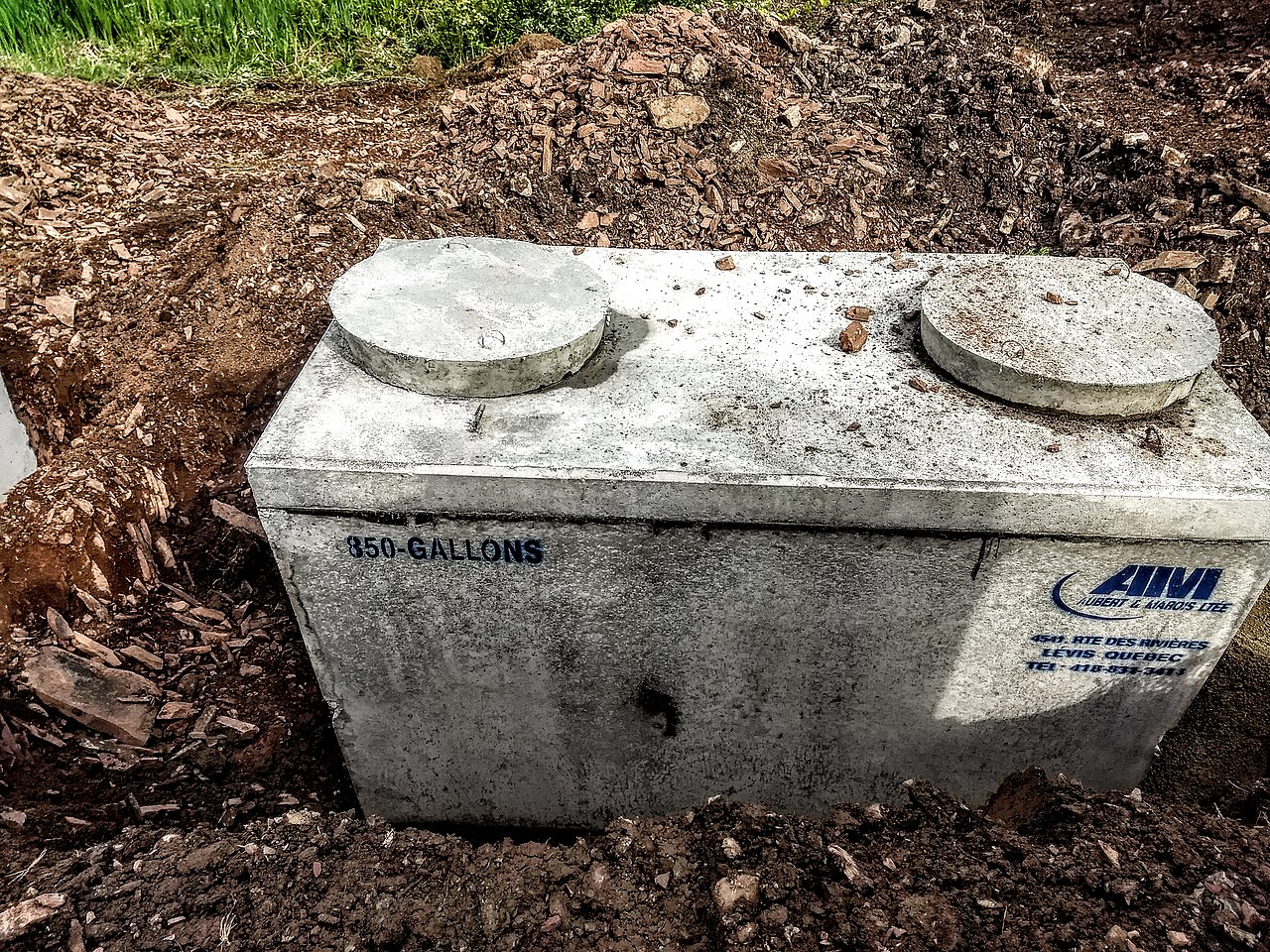Realizing that there are drain flies in your septic tank should not come as a big surprise. Indeed, one of the common names people like to use when referring to Psychodidae is sewer flies (or gnats). Septic tanks are one of their favorite urban living spots ever, along with drainpipes.
If you are wondering why there are drain flies in your septic tank, the answer stands in their way of living. Sewer gnats spend their entire life in extremely moist and wet areas, feeding on all different kind of organic materials and their build ups. And can you imagine a more ideal place for that, other than a sewage disposal system? Additionally, they breed where the larvae can survive best, in the thin jellylike films such as those that can be found in septic tank field lines.
These fuzzy little creatures will spend most of their lives in there, and those which you see around the tank or the house is just a small portion of their aggrupation. They only come out of their breeding sites every now and then, mostly during nighttime, while the rest of them spend their days inside the pipes and tanks, close to water and food.
Are Drain Flies Good for Septic Tanks?
Generally speaking, drain flies are not dangerous to humans as they do not tend to bite. Also, a healthy and moderate number of flies can lead to a cleaner tank, as they feed on the organic materials which people create.
But how to control the right number of flies, without them reproducing to such a number that leads to a serious infestation? If not treated on time, this issue could convert into a really expensive-to-fix problem. Also, there is always the highly possible risk of them getting into the pipes at some point, causing large clogs with their breeding sites multiplying. Not to mention that all the bacteria they are carrying from the septic tank can get onto your in-home surfaces. What a nightmare.

Drain flies are for many people not an issue when they are not bothering them, as they are really small and do not tend to fly that much (they are known to be quite the unlucky fliers, actually). However, not acting on time can sometimes lead to serious concerns for many families, including high-priced plumbing repair jobs and health hazards.
How Do I Get Rid of Drain Flies in My Septic Tank?
If you decide to get rid of sewer gnats while they are still in your septic tank, there are several options which you can try before contacting the exterminator.
If you notice the issue at an early stage, when there are not that many flies around, a simple home remedy can most likely solve it. Already available products such as diluted bleach or a combo of baking soda and vinegar can make miracles in killing gnat larvae.
On the other side, if the problem with breeding sites has already gone into an advanced stage, it will be necessary to use stronger products, such as those which are available commercially with the intention of treating drain fly problems.
Strong chemicals will do an amazing job in killing both flies and their breeding sites, but they are not recommendable for septic tanks. Chemicals can kill all the microbes in your tank, and those are essential for breaking down the organic materials you flush there. Consequentially, strong chemicals could lead to your sewage system becoming completely ineffective. Not to mention that they are not safe for the environment.
However, there are other commercial products available today, such as innovative probiotic gels, which will literally convert all the gnat feeding sources into minerals and water. Obviously, without making any damage to your tank or pipes. Or even to the environment.
More details on such bio-friendly products and other possible home remedies can be found in our complete guide on how to get rid of drain flies.
For those who seek a third alternative among bio-friendly products, here is one that has caught our eye online: BioWonder Septic Tank Treatment. It is specially designed for septic tanks, containing more bacteria of unique strains particularly effective in providing better performance to the sewage system. We did not have the chance to test it out yet, but we have carefully selected some of the most viewed customer reviews about it, and we are sharing the key points with you.

Customers say that the product managed to solve their issue with sewer flies, but not only. The septic pumper of some households which applied the product seems to be much cleaner now when compared to other sewage systems of similar homes.
Other people share their experiences with using the BioWonder Treatment in their garbage disposals. They state that the product has not only gotten rid of flies, but also of the bad odors. They compare it to similar treatments which only seem to manage the bad smell, and they assure us that BioWonder has completely solved their issue with that, too.
According to the data available online, this really seems to be a potentially effective product in fighting flies in septic tanks. What is certain about it, is that it is pretty affordable, so one would want to try to out anyway.
If you decide to try this or any other commercial product in dealing with your issue with gnats, please make sure to follow their instructions carefully when applying it.
If, even after such products are used as instructed, the problem with flies persists, it is probably time to ask help from a professional. This is always the most certain way of dealing your issue with any kind of infestation.
To conclude, a vitally important thing to remember doing once the fight with flies is completed. It is necessary to regularly perform preventive pipe and tank maintenance activities, so that you can be sure flies will not return. This can be as simple as pouring some drain gel down the pipes every now and then. Or placing some fly-repelling plants in your home.



